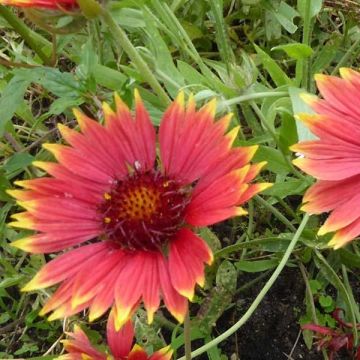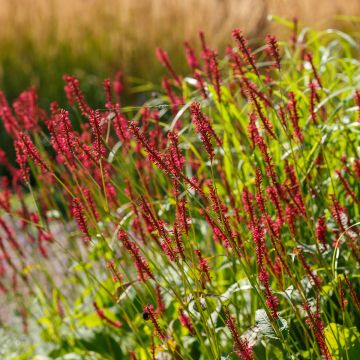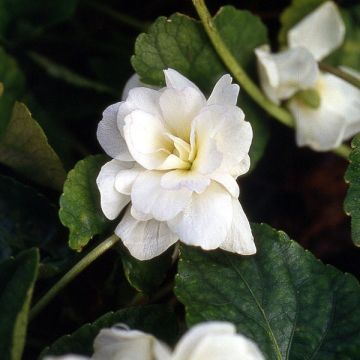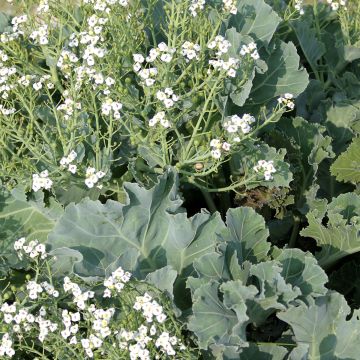

Trachystemon orientalis
Trachystemon orientalis
Trachystemon orientalis
Early-flowering Borage, Abraham-Isaac-Jacob, Eastern Borage
The package was dented and upside down. Inside, full of soil... Out of the 3 I ordered, 1 stem was broken - unusable.
Denis, 11/03/2024
This item cannot be shipped to the selected country
Delivery charge from €5.90
More information
Delivery charge from €5.90
More information
Schedule delivery date,
and select date in basket
This plant carries a 12 months recovery warranty
More information
We guarantee the quality of our plants for a full growing cycle, and will replace at our expense any plant that fails to recover under normal climatic and planting conditions.
From €5.90 for pickup delivery and €6.90 for home delivery
Express home delivery from €8.90.
Does this plant fit my garden?
Set up your Plantfit profile →
Description
Trachystemon orientalis, sometimes called Borago orientalis or orienta borage, is a perennial ground cover plant with spectacular growth. It resembles its cousin, common borage, with its blue-violet flowers in April-May. Its large heart-shaped foliage is reminiscent of hostas. WIth its attractive flowering, adaptability, and resistance to dry shade, it will find its place in slightly wild areas of the garden, where space is not limited.
Trachystemon orientalis belongs to the Boraginaceae family. This species originates from Eastern Europe and Asia Minor: Bulgaria, Turkey, Russia (Caucasus Mountains). Its range has expanded to all countries with a temperate climate.
Trachystemon orientalis is a spreading herbaceous perennial plant, reaching a height of 50cm (20in) and quickly covering large areas thanks to its rhizomatous roots. Its stems and foliage are covered in dense hair. The dark green leaves are wide, large, and heart-shaped, reminiscent of hostas. The blue-violet flowers appear before the foliage in April-May. They are pedunculate, in loose clusters, and measure 1.2cm (1in) in width. Each flower is punctuated by the small dark and protruding cone formed by the fused stamens. The growth rate of this plant is fast, and Trachystemon orientalis can become invasive.
Plant oriental borage in humus-bearing, rich in leaf compost, neutral to acidic, and moist but well-drained soil. It will be more beautiful in shade or partial shade, but can tolerate all situations. It can be truly spectacular in moist to wet soil and adapts perfectly to dry shade.
Trachystemon orientalis establishes itself permanently in the garden. Discouraging adventive species, it makes a good ground cover for rural and wild areas of the garden, but its tendency to spread makes it more suitable for large spaces. It can be planted individually or mixed with spring-flowering bulbs such as poet's narcissi, squills, camassia, snowflakes, and wild hyacinths. Other vigorous perennials such as comfrey, German iris, red hot pokers, dead nettle, ligularia, plume poppy, perennial Geranium 'Spessart' or G. nodosum, Solomon's seal, and fairy bells.
Trachystemon orientalis in pictures


Flowering
Foliage
Plant habit
Botanical data
Trachystemon
orientalis
Boraginaceae
Early-flowering Borage, Abraham-Isaac-Jacob, Eastern Borage
Caucasus
Other Perennials A to Z
Planting and care
Plant in humus-bearing, rich in leaf compost, neutral to acidic, and moist but well-drained soil. It will be more beautiful in shade or partial shade, but can adapt to all situations, even under the moist shade of trees and bushes. It can be truly spectacular in moist to wet soil. Cut back the clumps before the new foliage appears in early spring.
Planting period
Intended location
Care
Spring flowering perennials
Haven't found what you were looking for?
Hardiness is the lowest winter temperature a plant can endure without suffering serious damage or even dying. However, hardiness is affected by location (a sheltered area, such as a patio), protection (winter cover) and soil type (hardiness is improved by well-drained soil).

Photo Sharing Terms & Conditions
In order to encourage gardeners to interact and share their experiences, Promesse de fleurs offers various media enabling content to be uploaded onto its Site - in particular via the ‘Photo sharing’ module.
The User agrees to refrain from:
- Posting any content that is illegal, prejudicial, insulting, racist, inciteful to hatred, revisionist, contrary to public decency, that infringes on privacy or on the privacy rights of third parties, in particular the publicity rights of persons and goods, intellectual property rights, or the right to privacy.
- Submitting content on behalf of a third party;
- Impersonate the identity of a third party and/or publish any personal information about a third party;
In general, the User undertakes to refrain from any unethical behaviour.
All Content (in particular text, comments, files, images, photos, videos, creative works, etc.), which may be subject to property or intellectual property rights, image or other private rights, shall remain the property of the User, subject to the limited rights granted by the terms of the licence granted by Promesse de fleurs as stated below. Users are at liberty to publish or not to publish such Content on the Site, notably via the ‘Photo Sharing’ facility, and accept that this Content shall be made public and freely accessible, notably on the Internet.
Users further acknowledge, undertake to have ,and guarantee that they hold all necessary rights and permissions to publish such material on the Site, in particular with regard to the legislation in force pertaining to any privacy, property, intellectual property, image, or contractual rights, or rights of any other nature. By publishing such Content on the Site, Users acknowledge accepting full liability as publishers of the Content within the meaning of the law, and grant Promesse de fleurs, free of charge, an inclusive, worldwide licence for the said Content for the entire duration of its publication, including all reproduction, representation, up/downloading, displaying, performing, transmission, and storage rights.
Users also grant permission for their name to be linked to the Content and accept that this link may not always be made available.
By engaging in posting material, Users consent to their Content becoming automatically accessible on the Internet, in particular on other sites and/or blogs and/or web pages of the Promesse de fleurs site, including in particular social pages and the Promesse de fleurs catalogue.
Users may secure the removal of entrusted content free of charge by issuing a simple request via our contact form.
























































